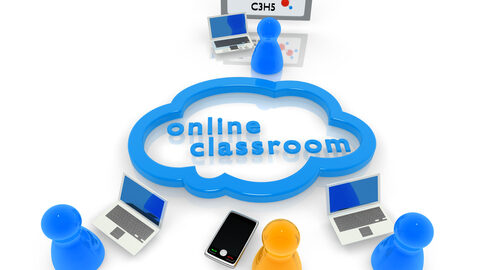By Alec Fehl, author of Labyrinth Learning’s Microsoft® PowerPoint® 2016 Essentials and Your Digital Foundation Continue reading Let Your Students Have a Do-Over


By Alec Fehl, author of Labyrinth Learning’s Microsoft® PowerPoint® 2016 Essentials and Your Digital Foundation Continue reading Let Your Students Have a Do-Over


One of the biggest issues in teaching is being able to engage a large number of students at the same time despite their differences. The teaching strategies that capture and retain the interest of extroverts won’t produce the same results in introverts — extroverts tend to be more eager to participate in the open.
Teaching extroverts and introverts at the same time is not an impossible task, though it does mean that teachers will have to be observant and take both groups into account when crafting their lesson plans.
Here are some suggestions for teaching extroverts and introverts in the same classroom:
Are you looking for more tips on teach introverts and extroverts? Contact us at Labyrinth Learning about more resources for engaging students.


There are many different types of learners — kinesthetic, auditory and visual. An auditory learner is a person that learns best through active listening. They take on information through listening and active discussions. If you feel that you or your student may be an auditory learner, there are a few things you can do to help.
Here are some great strategies for teaching auditory learners:
If you are interested in learning more about teaching auditory learners, contact us today at Labyrinth Learning.


The good news is that American high school graduates are enrolling in colleges at record numbers. The bad news – they’re also dropping out of college at faster rates than ever before. That’s the word from a recent article in the New York Times titled, “How to Help College Students Graduate”.
Author David L. Kirp cites that just over half the students who enroll in four-year colleges leave with a diploma in hand, and only a dismal one-third of students who enroll in community colleges complete their studies. The solution to this problem is an obvious one: colleges and university must be able to provide the level of support and assistance necessary to improve the graduation rate.
Consider what was done when the City University of New York (CUNY) began their ASAP initiative, addressing the high dropout rates at their community colleges. The program provided free-assistance for transportation and books. In order to help students who are working their way through school, CUNY worked with colleges to provide flexible block scheduling so students could attend their classes in the morning, afternoon, and evenings, making it easier to create a consistent work schedule with employers.
CUNY also implemented one-on-one advising and virtual mentoring assistance to provide additional human support. The results? Almost 60% of the students participating in their ASAP program have graduated with their associates degree.
Do you want to improve the graduation rate at your college? See how Labyrinth Learning can help you bring more graduates into the world.


As the new year gets underway, how are you planning to create a more student centered classroom? With the following tips you can refine your teaching skills and help your students learn more effectively in 2014 and beyond.
With these tips, the first semester in 2014 can lead to happier, more interested learners. For more on creating a student centered classroom in 2014, please contact us today at Labyrinth Learning.
Image Source: freedigitalphotos

People usually lean toward one of these learning types: kinesthetic, auditory, and visual. Kinesthetic learners absorb information through hands-on experience; auditory learners through verbal explanations; and visual learners through graphics, demonstrations, and textual instructions. The secret to being a successful instructor is knowing what kind of learners you’re going to face so that you can prepare materials suited to their style.

If you’re working with the visual type of learner, then get creative with your lessons! The following tips and tricks can help you teach a visual learner:
The great news is that it’s much easier to teach visual folks now than ever before with a little help from us at Labyrinth Learning. We create effective learning solutions that use innovative online tools. Contact us for more information!
Image Source: freedigitalphotos

Education is changing rapidly due to technology for students and many bright teenagers would like to move quickly through the secondary school system. A new bill introduced in the Wisconsin legislature would allow middle school children to earn high school class credit, similar to the advanced placement programs in many states that allow high school students to take community college classes for credit.

12 and 13-year old kids may be lacking in the essential computer skills needed to use word processing programs or spreadsheets. These programs are necessary in high school and college. Labyrinth Learning has the resources to help bridge the gap between what students have learned and what they need to know and help them more easily excel in their new environment.
In addition middle school teachers need tools to evaluate computer technology skills and work with students as facilitators while students learn and improve their skills. This facilitation will be made easier with technology for students that can be implemented in the classroom for these students who are excelling.
Labyrinth Learning has the necessary resources to bring young students and teachers together for a positive learning environment.

Community college MOOCs, or Massive Open Online Courses, are being scrutinized as more community colleges strive to meet the needs of their students while managing significant budget cuts. The online publication Community College Week recently published an article titled, “Survey: Community Colleges Remain Wary of MOOCs,” summarizing the results of a recent survey regarding MOOCs and their role in community colleges.
Here are two survey findings we feel are particularly interesting.
Completion rates of MOOCs are low. While completion of MOOCs may be low, students who participate in traditional distance learning methods seem to do just fine, “The gap between distance learning and face-to-face student completion rates has significantly narrowed.” This tells us that distance learning is doing something right, and MOOCs need to find the right combination of learning materials and method before their completion gaps will catch up.
Learning materials matter. The key to student success, whether it be face-to-face or online, is directly related to, “…course quality and design, faculty training and preparation, course assessment, and improvements in student readiness and retention.” The materials we create here at Labyrinth Learning are designed to do just that. Our textbook and eLearning tools incorporate self-paced, hands-on learning strategies, effective assessments, and ample resources for students and instructors.
Labyrinth Learning textbooks and online resources are designed for both face to face and MOOC environments. Contact Labyrinth Learning to learn more.
Photo Source: Shutterstock

The divide for disadvantaged students at community colleges continues to widen. Reasons for this are complex. However, if one were pressed to define the problem it boils down to resources. “Government funding skews toward universities with more advantaged students, due in part to research support and tax breaks,” says Paul Fain in his article, Equity Gaps Widen, published on InsideHigherEd.com.
Students attending community colleges have far fewer resources than their four-year college counterparts. And, because community colleges are more affordable, a larger sector of their student populations are from underprivileged backgrounds. So, what are the resources that community college students lack?
Per student costs. When you eliminate the higher cost of on-campus housing and faculty research funding typically found at 4-year institutions, 2-year colleges are able to spend about $5,000 per student. That figure is doubled to $10,000 at public research colleges, and quadrupled to $20,000 at most private research colleges.
Access to learning resources. While a community college is able to supply a moderate amount of technology for students and their learning process, students often have to rely on their own technology to complete online courses, write papers, do research, etc. Most large universities provide a more ample supply of technology for students, even though the general student population comes from more affluent backgrounds, and already has access to technology at home.
As a company that prioritizes streamlining the learning process, Labyrinth Learning is hopeful that emerging reports on existing disparities will help to shift to create a more equitable funding solution.
Photo Source: Shutterstock

 Today’s technology for students in the classroom is about more than getting them ahead in the workplace. In order to make it that far, students need to feel empowered, confident, and successful in their academic career. Without those components in place, many students feel inadequate and quit their academic pursuits altogether.
Today’s technology for students in the classroom is about more than getting them ahead in the workplace. In order to make it that far, students need to feel empowered, confident, and successful in their academic career. Without those components in place, many students feel inadequate and quit their academic pursuits altogether.
Teachers and administrators can use technology for students to foster a supportive learning environment for students.
Know Your Student Population. According to Community College Week, almost seven million students are enrolled in a community college, yet only 12% of younger students will earn their Associates degree by age 26. Only 14% of low-income students will complete their degrees at all. Second Language Learner populations increase annually. These at-risk students need more help than traditional students in order to successfully complete their education.
Use Assessments Wisely. One of the first methods for making students feel successful is to ensure they are placed appropriately depending on their knowledge/skill levels. Once they are in class, regular and strategic assessments ensure teachers and faculty have instant access to student performance. Those students who are not making the mark can be buoyed up with additional learning support and materials.
Providing Online Classes. Today’s students are balancing school, work, and families, which means they need classes that are accessible from anywhere and during non-traditional school hours. The more online courses colleges and universities offer, the more efficiently students can learn the technological skills they need.
For more information on improving technology for students in your classrooms, contact Labyrinth Learning.